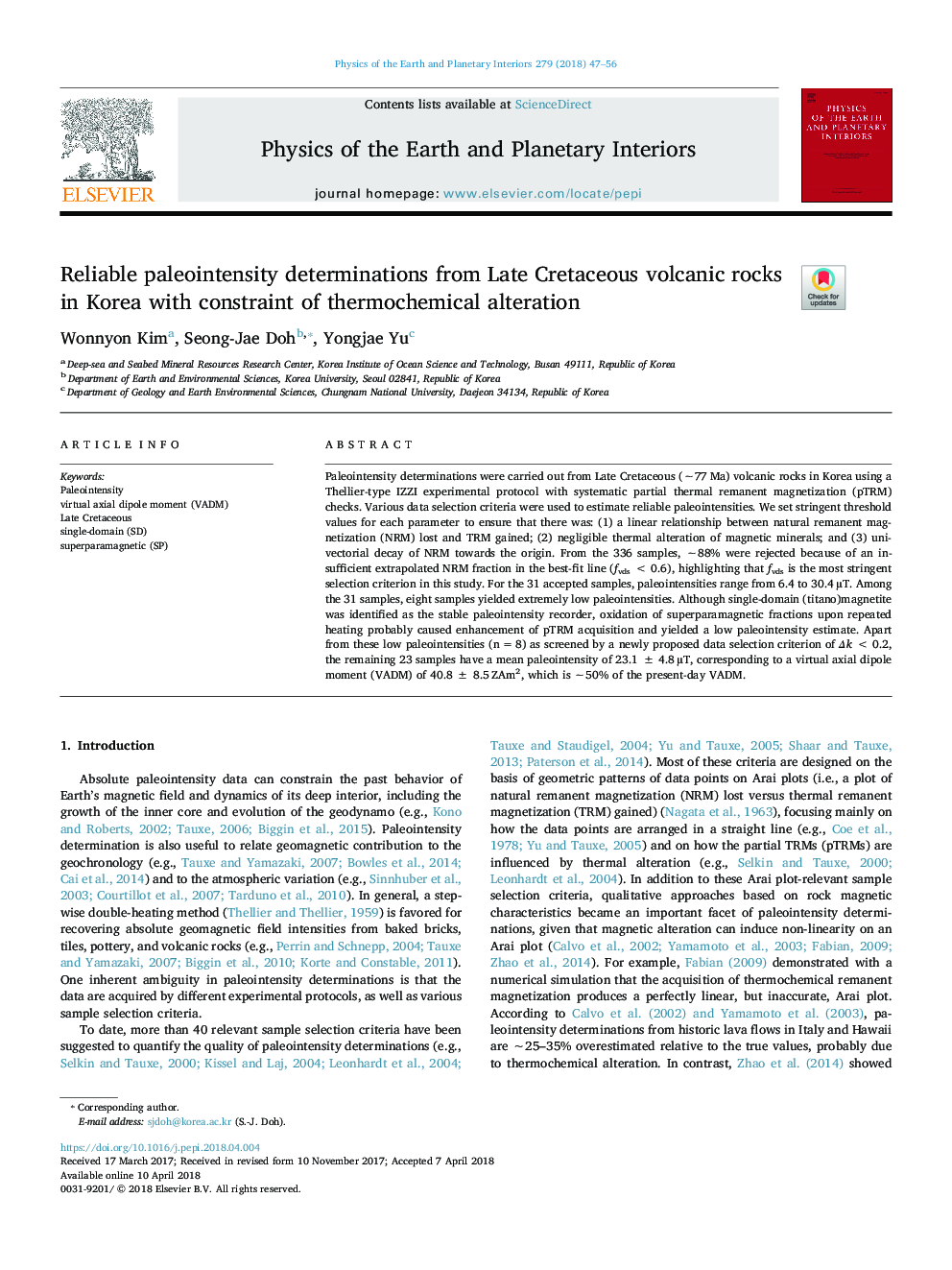| Article ID | Journal | Published Year | Pages | File Type |
|---|---|---|---|---|
| 8915693 | Physics of the Earth and Planetary Interiors | 2018 | 10 Pages |
Abstract
Paleointensity determinations were carried out from Late Cretaceous (â¼77â¯Ma) volcanic rocks in Korea using a Thellier-type IZZI experimental protocol with systematic partial thermal remanent magnetization (pTRM) checks. Various data selection criteria were used to estimate reliable paleointensities. We set stringent threshold values for each parameter to ensure that there was: (1) a linear relationship between natural remanent magnetization (NRM) lost and TRM gained; (2) negligible thermal alteration of magnetic minerals; and (3) uni-vectorial decay of NRM towards the origin. From the 336 samples, â¼88% were rejected because of an insufficient extrapolated NRM fraction in the best-fit line (fvdsâ¯<â¯0.6), highlighting that fvds is the most stringent selection criterion in this study. For the 31 accepted samples, paleointensities range from 6.4 to 30.4â¯ÂµT. Among the 31 samples, eight samples yielded extremely low paleointensities. Although single-domain (titano)magnetite was identified as the stable paleointensity recorder, oxidation of superparamagnetic fractions upon repeated heating probably caused enhancement of pTRM acquisition and yielded a low paleointensity estimate. Apart from these low paleointensities (nâ¯=â¯8) as screened by a newly proposed data selection criterion of Îkâ¯<â¯0.2, the remaining 23 samples have a mean paleointensity of 23.1â¯Â±â¯4.8â¯ÂµT, corresponding to a virtual axial dipole moment (VADM) of 40.8â¯Â±â¯8.5â¯ZAm2, which is â¼50% of the present-day VADM.
Keywords
Related Topics
Physical Sciences and Engineering
Earth and Planetary Sciences
Geophysics
Authors
Wonnyon Kim, Seong-Jae Doh, Yongjae Yu,
